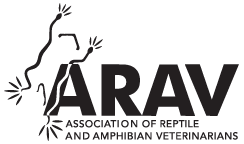Comparison of Three Point-of-Care Analyzers for the Measurement of Lactate Concentration in Chelonians
Blood lactate concentration has been identified as a prognostic indicator in chelonians. However, comparison among various studies about lactate concentration is hindered by the fact that various point-of-care analyzers are used. This study evaluated agreement, correlation and biases between three commonly used analyzers, the Lactate Plus (Nova), i-STAT (Abbott), and EPOC (Heska). Forty chelonians of 10 different species were included in the study. The animals were recruited from a rehabilitation center and from the clientele of a veterinary teaching hospital, and presented with a variety of health statuses and a wide range of lactate concentration. A single blood sample obtained from each individual was placed in a heparinized tube and analyzed concomitantly by two analyzers per sample (20 chelonians for each analyzer). Agreement between the lactate and blood analyzers was evaluated via a Bland–Altman plot and correlation via a Spearman correlation coefficient. Bias was determined using a Passing–Bablok regression analysis. There was a fair agreement between the three techniques, but agreement was decreased for lactate concentrations above 5 mmol/L. Both blood analyzers reported consistently greater lactate concentrations compared to values obtained with the Lactate Plus, with a positive proportional bias. Correlations between the Lactate Plus and the two other point-of-care analyzers were excellent, 97.0% and 92.8% with the i-STAT and the EPOC analyzers, respectively. This study highlights the need to conduct studies in various reptile species to evaluate the performance of point-of-care analyzers.Abstract

Study design used to compare a handheld lactate meter (Lactate Plus, Nova Biomedical) to two portable blood analyzers, respectively, the i-STAT, Abbott and the EPOC, Heska, using 40 chelonians (20 in each group).

Bland–Altman plot of agreement between blood lactate concentration measured by a handheld lactate meter analyzer (Lactate Plus, Nova Biomedical) and a blood POC analyzer (EPOC, Heska) for 20 chelonians. Bias (y-axis) was calculated as the handheld POC analyzer value minus the lactate analyzer value. The x-axis represents the mean of the two measurements. Black dots represent data points. The solid horizontal black line indicates the line of zero bias; the central dashed horizontal line indicates the mean bias. The upper and lower dashed black lines indicate the 95% limit of agreement.

Bland–Altman plot of agreement between blood lactate concentration measured by a handheld lactate meter analyzer (Lactate Plus, Nova Biomedical) and a blood POC analyzer (i-STAT, Abbott) for 19 chelonians. Bias (y-axis) was calculated as the handheld POC analyzer value minus the lactate analyzer value. The x-axis represents the mean of the two measurements. Black dots represent data points. The solid horizontal black line indicates the line of zero bias, the central dashed horizontal line indicates the mean bias. The upper and lower dashed black lines indicate the 95% limit of agreement.

Passing–Bablok regression of blood lactate concentration measured by a handheld lactate meter analyzer (Lactate Plus, Nova Biomedical) and a blood POC analyzer (EPOC, Heska) for 20 chelonians. Circles represent individual measurements. The regression line is indicated by the solid line, and the shaded area represents 95% limits of agreement. The identity line (x = y) is indicated by the dashed line.

Passing–Bablok regression of blood lactate concentration measured by a handheld lactate meter analyzer (Lactate Plus, Nova Biomedical) and a blood POC analyzer i-STAT, Abbott) for 19 chelonians. Circles represent individual measurements. The regression line is indicated by the solid line, and the shaded area represents 95% limits of agreement. The identity line (x = y) is indicated by the dashed line.
Contributor Notes



